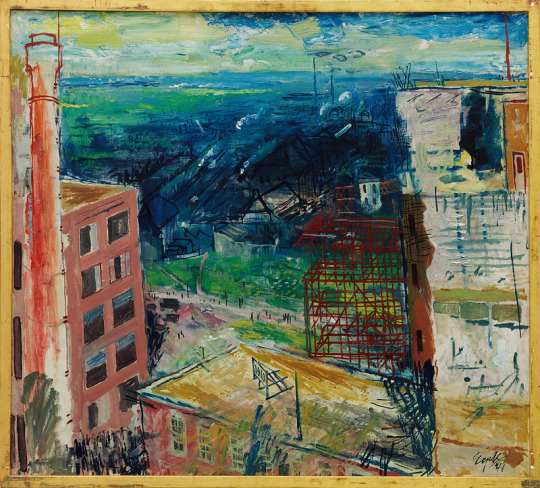#Charles Eyck
Text

Eglise Saint Martin in Jeantes (France)
Wallpaintings and stained glass made by Charles Eyck (Dutch 1897-1983) in 1962.
25 notes
·
View notes
Text


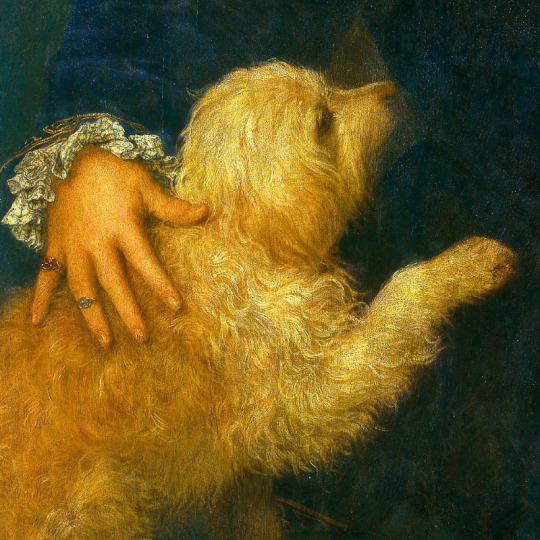



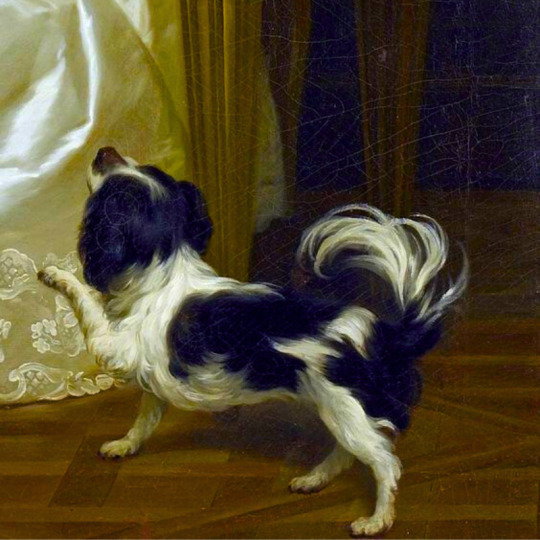
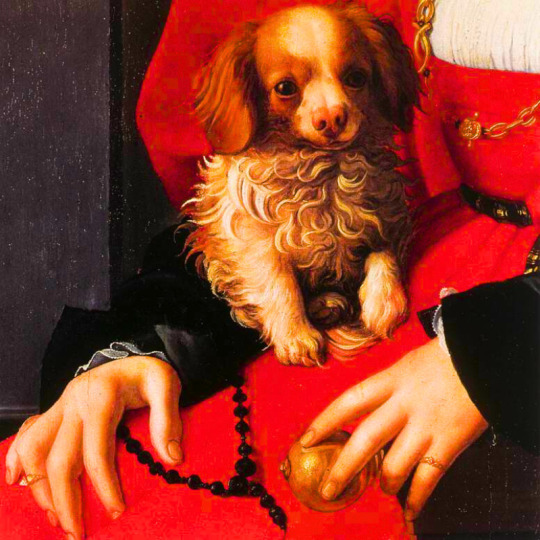
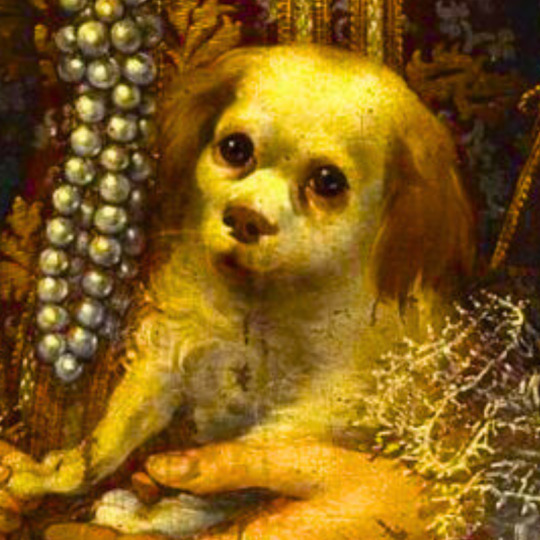

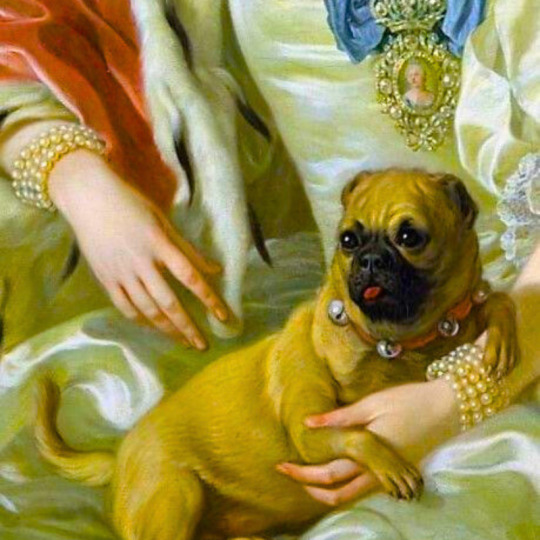
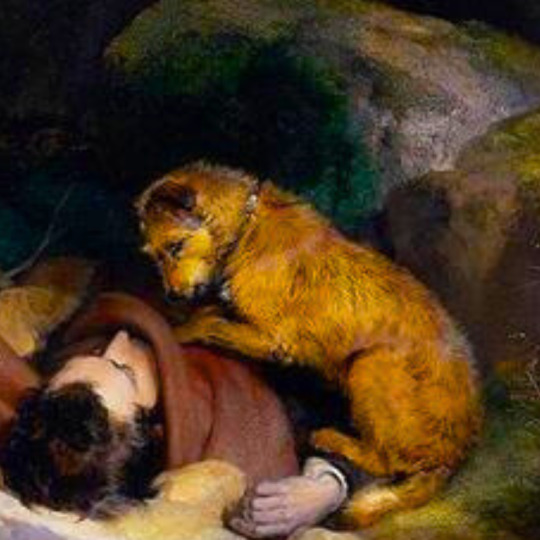
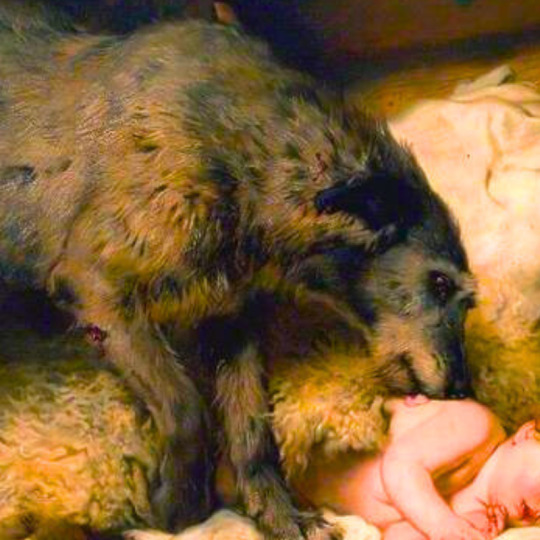




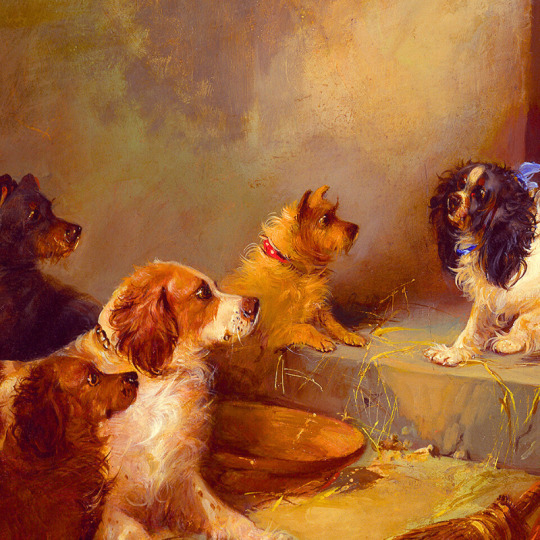
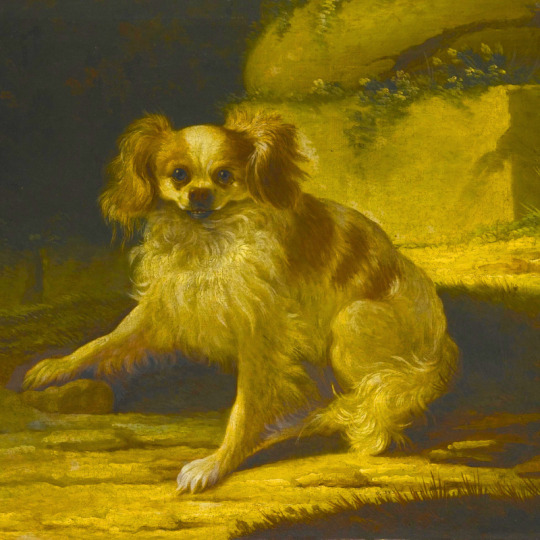


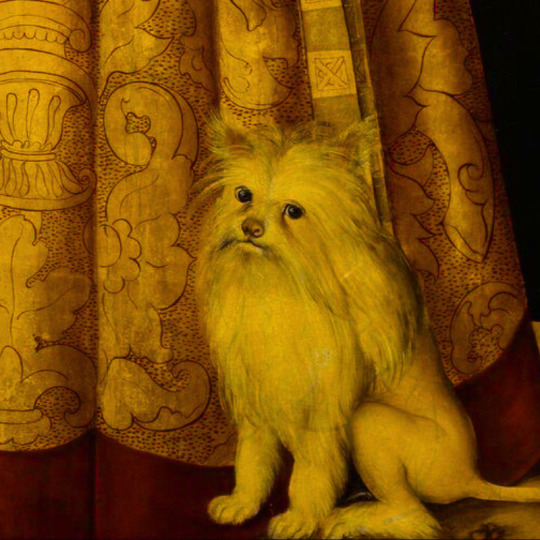
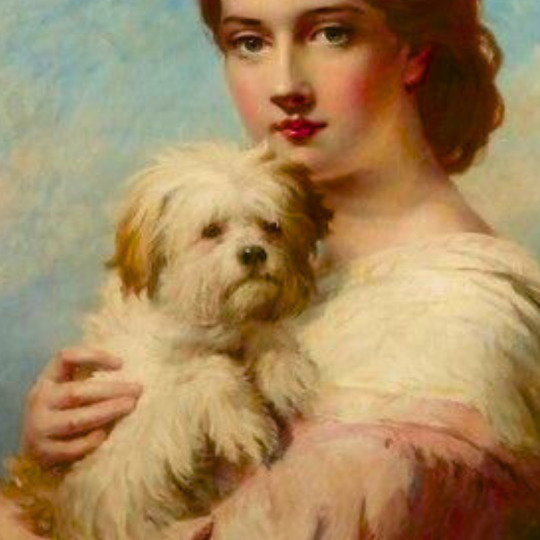
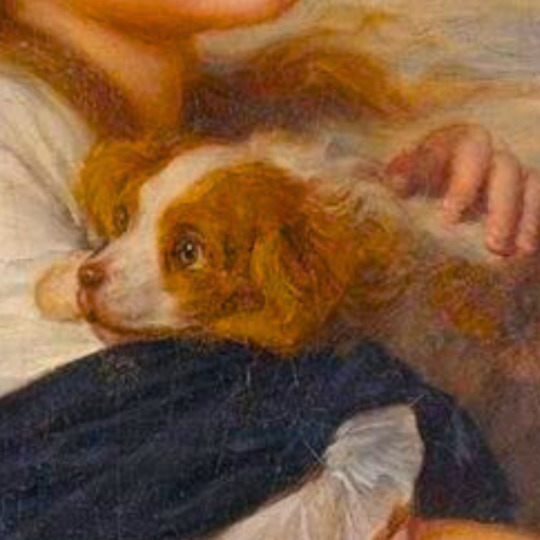

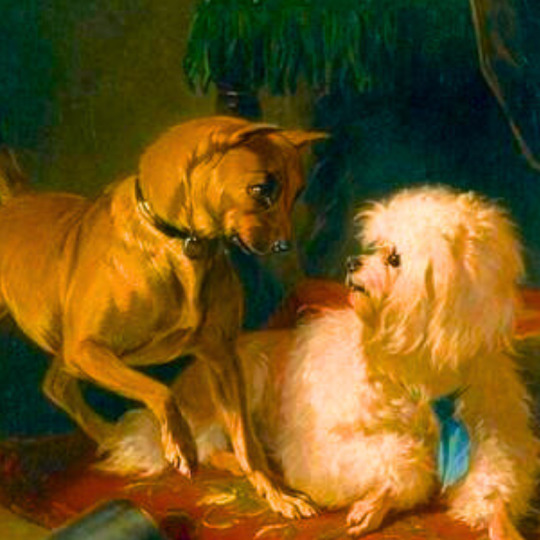


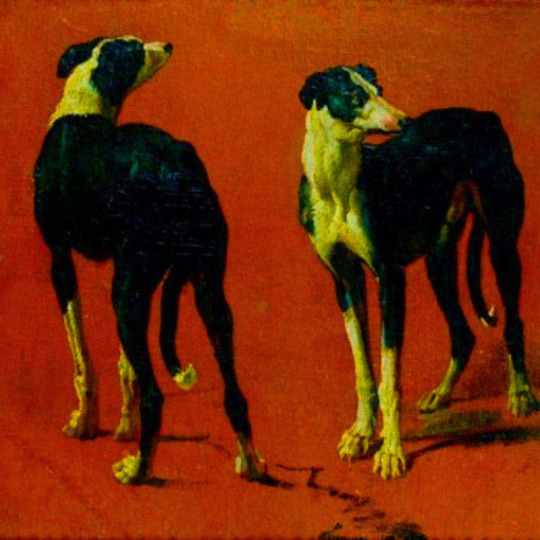

dogs + art
#mars and venus with cupid and a dog by paola veronese#venus of urbino by titian#portrait of federico ii gonzaga by titian#the death of procris by piero di cosimo#arnolfini portrait by jan van eyck#venus and adonis by titian#portrait of the countesse d'egmont pignatelli in spanish costume by alexander roslin#portrait of a lady in red by agnolo bronzino#maselli family portrait by lavinia fontana#children of the marquis de bethune playing with dog by francois hubert drouais#portrait of princess ekaterina dmitrievna golitsyna by louis-michel van loo#attachment by edwin landseer#gelert by charles b. barber#the poor dog the shepherd's grave by edwin landseer#requiescat by briton riviere#marie leszczinska#my lady's pets by arthur wardle#the great debate by george armfield#portrait of a brown and white toy spaniel in a landscape by jacques-charled oudry#darby in his basket kennel by anthony frederick sandys#portrait of john 3rd baron monson of burton by pompeo girolamo batoni#portrait of dutchess katharina von mecklenburg by lucas cranach the elder#young lady and her dog by james john hill#young girl with a spaniel by jean-baptise greuze#the masters chair by john henry dolph#interior with two dogs by conradijn cunaeus#no walk today by wright baker#painter's studio by otto erelman#study of greyhounds by alexandre-francois desportes#sitting pretty by horatio henry couldrey
190 notes
·
View notes
Text


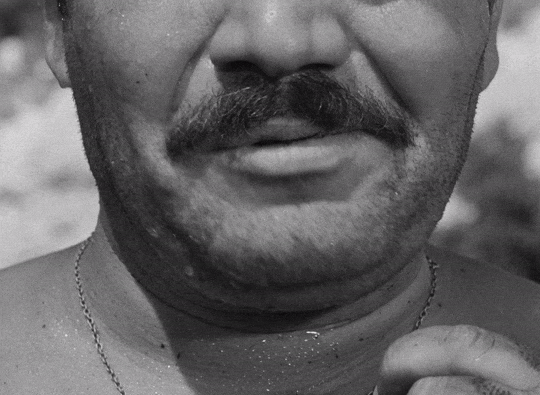
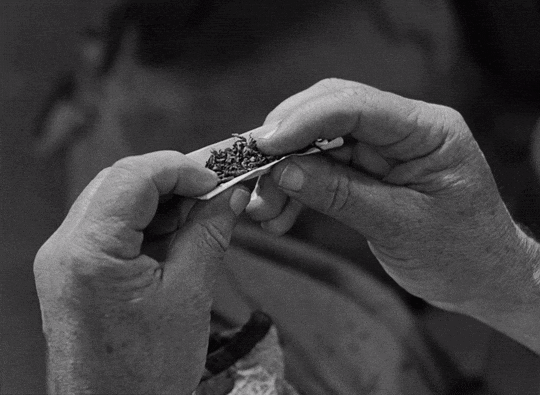
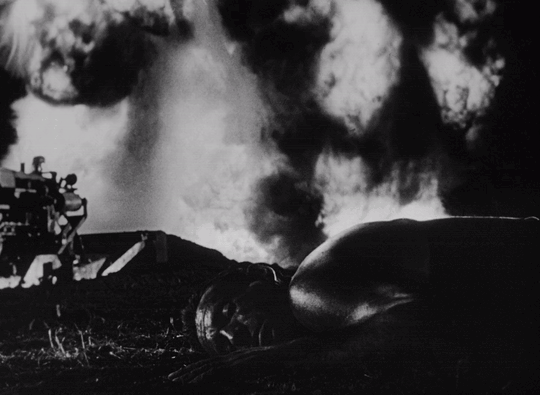
The Wages of Fear (1953)
----------------------------
dir. Henri-Georges Clouzot
cin. Armand Thirard
cs. France, Italy
#the wages of fear#le salaire de la peur#1953#1953 movies#henri georges clouzot#yves montand#charles vanel#folco lulli#armand thirard#french cinema#italian cinema#Véra Clouzot#Peter van Eyck
4 notes
·
View notes
Text


charles leclerc (dan istitene, 2022) // detail of the virgin mary from the ghent altarpiece, or the adoration of the mystic lamb (hubert and jan van eyck, 1432)
(charles x art, 20/?)
#charles leclerc#charles x art#f1#pip.txt#i've had a lot of fun with these but i am getting busy at work#so they will probably be less frequent now ;;;;;#not that i assume anyone is enjoying this extreme self indulgence more than i am sdklfjlkjglkj
79 notes
·
View notes
Text

- Adoration of the Mystic Lamb (detail of the Ghent Altarpiece, Jan van Eyck, c. 1432)
- Charles Leclerc, Austria GP 2023
#i still like his expression; his particular air of melancholia despite earning millions. lmao.#another old thing from all the way back in july#and an interesting personal experiment in trying to combine the medieval lettering with the ever-present rolex logo#idk never rlly happy with the brushes i chose which is why ive been letting it loiter so long but who gaf im doing this for fun#cl16#ali + art#austria gp 2023#charles leclerc#f1 art#f1 fanart#formula 1#formula one
14 notes
·
View notes
Photo
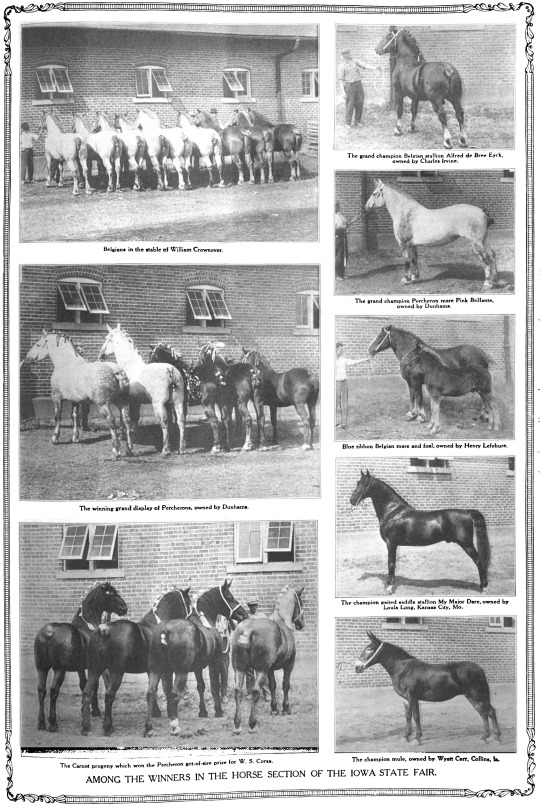
AMONG THE WINNERS IN THE HORSE SECTION OF THE IOWA STATE FAIR.
Belgians in the stable of William Crownover.
The winning grand display of Percherons, owned by Dunhams.
The Carnot progeny which won the Percheron get-of-sire prize for W. S. Corsa.
The grand champion Belgian stallion Alfred de Bree Eyck, owned by Charles Irvine.
The grand champion Percheron mare Pink Brillante, owned by Dunhams.
Blue ribbon Belgian mare and foal, owned by Henry Lefebure.
The champion gaited saddle stallion My Major Dare, owned by Loula Long, Kansas City, Mo.
The champion mule, owned by Wyatt Carr, Collins, Ia.
The Breeder’s Gazette, Vol. 70, 7 September 1916
#Iowa State Fair#horses#heavy horse#draught horse#draft horse#heavy draught#Belgian#Alfred de Bree Eyck#Percheron#Pink Brillante#mare and foal#American Saddlebred#My Major Dare#mule#The Breeder’s Gazette#1916
23 notes
·
View notes
Text
hollywood's happiest couple
the films of billy wilder (writer&director) and charles brackett (writer&producer)

Bluebeard’s Eighth Wife (1938).
Director: Ernst Lubitsch.
Cast: Claudette Colbert. Gary Cooper. Edward Everett Horton. David Niven.
Screenplay: Charles Brackett and Billy Wilder. From the play by Alfred Savoir; English-language adaptation by Charlton Andrews.
That Certain Age (1938).
Director: Edward Ludwig.
Cast: Deanna Durbin. Melvyn Douglas. Jackie Cooper. Nancy Carroll. Irene Rich.
Screenplay: Bruce Manning. From an original story by F. Hugh Herbert. Charles Brackett and Billy Wilder received no screen credit for their work on That Certain Age.
Ninotchka (1939).
Director: Ernst Lubitsch.
Cast: Greta Garbo. Melvyn Douglas. Ina Claire. Bela Lugosi.
Screenplay: Charles Brackett, Billy Wilder, and Walter Reisch. From an original story by Melchior Lengyel.
Midnight (1939).
Director: Mitchell Leisen.
Cast: Claudette Colbert. Don Ameche. John Barrymore. Mary Astor.
Screenplay: Charles Brackett and Billy Wilder. From a story by Edwin Justus Mayer and Franz Schulz.
What a Life (1939).
Director: Theodore Reed.
Cast: Jackie Cooper. Betty Field. John Howard. Janice Logan.
Screenplay: Charles Brackett and Billy Wilder. From the play by Clifford Goldsmith.
Arise, My Love (1940).
Director: Mitchell Leisen.
Cast: Claudette Colbert. Ray Milland. Dennis O’Keefe. Walter Abel.
Screenplay: Charles Brackett and Billy Wilder. Adaptation by Jacques Théry, itself from an original story by Hans Székely and Benjamin Glazer.
French Without Tears (1940).
Director: Anthony Asquith.
Cast: Ray Milland. Ellen Drew. Janine Darcey. David Tree. Roland Culver.
Screenplay: Ian Dalrymple, Terence Rattigan, and Anatole de Grunwald. Brackett and Wilder worked on the story treatment.
Ball of Fire (1941).
Director: Howard Hawks.
Cast: Gary Cooper. Barbara Stanwyck. Oskar Homolka. Henry Travers. S.Z. Sakall.
Screenplay: Charles Brackett and Billy Wilder. From an original story by Wilder and Thomas Monroe.
Hold Back the Dawn (1941).
Director: Mitchell Leisen.
Cast: Charles Boyer. Olivia de Havilland. Paulette Goddard.
Screenplay: Charles Brackett and Billy Wilder. From Ketti Frings’ story “Memo to a Movie Producer.”
The Major and the Minor (1942).
Director: Billy Wilder.
Cast: Ginger Rogers. Ray Milland. Rita Johnson. Robert Benchley. Diana Lynn.
Screenplay: Charles Brackett and Billy Wilder. From the play by Edward Childs Carpenter, itself based on a story by Fanny Kilbourne.
Five Graves to Cairo (1943).
Director: Billy Wilder.
Associate Prod.: Charles Brackett.
Cast: Franchot Tone. Anne Baxter. Akim Tamiroff. Erich von Stroheim. Peter van Eyck.
Screenplay: Charles Brackett and Billy Wilder. From the play by Lajos Biró.
The Lost Weekend (1945).
Director: Billy Wilder.
Prod.: Charles Brackett.
Cast: Ray Milland. Jane Wyman. Phillip Terry. Howard Da Silva. Doris Dowling. Frank Faylen.
Screenplay: Charles Brackett and Billy Wilder. From the novel by Charles R. Jackson.
The Bishop’s Wife (1947).
Director: Henry Koster.
Cast: Cary Grant. Loretta Young. David Niven. Gladys Cooper. Monty Woolley. James Gleason. Elsa Lanchester.
Screenplay: Robert E. Sherwood and Leonardo Bercovici. From the novel by Robert Nathan.
Charles Brackett and Billy Wilder received no screen credit for their work on The Bishop’s Wife.
A Foreign Affair (1948).
Director: Billy Wilder.
Prod.: Charles Brackett.
Cast: Jean Arthur. Marlene Dietrich. John Lund. Millard Mitchell.
Screenplay: Charles Brackett, Billy Wilder, and Richard L. Breen. Adaptation by Robert Harari. From an original story by David Shaw.
The Emperor Waltz (1948).
Director: Billy Wilder.
Prod.: Charles Brackett.
Cast: Bing Crosby. Joan Fontaine. Roland Culver.
Screenplay: Charles Brackett and Billy Wilder.
Sunset Blvd. (1950).
Director: Billy Wilder.
Prod.: Charles Brackett.
Cast: William Holden. Gloria Swanson. Erich von Stroheim. Nancy Olson. Fred Clark. Cameos: Hedda Hopper. Cecil B. DeMille. Anna Q. Nilsson. Buster Keaton. H.B. Warner.
Screenplay: Charles Brackett, Billy Wilder, and D.M. Marshman Jr.
1 note
·
View note
Photo
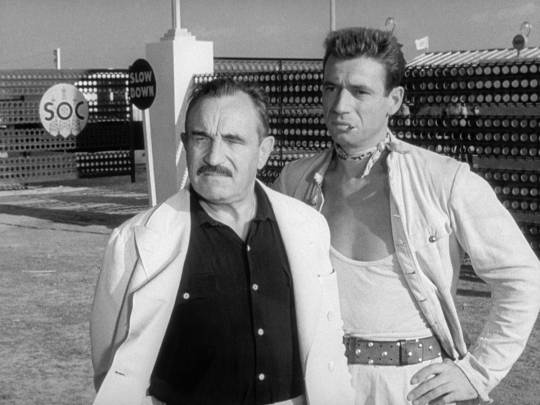
Charles Vanel and Yves Montand in The Wages of Fear (Henri-Georges Clouzot, 1953)
Cast: Yves Montand, Charles Vanel, Folco Lulli, Peter van Eyck, Véra Clouzot, William Tubbs, Jo Dest, Antonio Centa, Luis De Lima. Screenplay: Henri-Georges Clouzot, Jérôme Géronimi, based on a novel by Georges Arnaud. Cinematography: Armand Thirard. Art direction: René Renoux. Film editing: Madelein Gug, Etiennette Muse, Henri Rust. Music: Georges Auric.
With John Huston's The Treasure of the Sierra Madre (1948) and Sam Peckinpah's The Wild Bunch (1969), Henri-Georges Clouzot's The Wages of Fear forms an unholy trinity of adventure films. All three are about soldiers of fortune in Latin American countries seen as ripe for the pickings by predatory outsiders. Clouzot's film is probably the most deeply cynical of the three: Houston at least lets two of his adventurers survive, and Peckinpah's bunch at least shows some sympathy for the exploited poor. But from the opening of Clouzot's film, in which a half-naked child is seen tormenting some cockroaches (a scene Peckinpah borrowed for his film's opening), we are in hell. The unnamed country is being plundered by the Southern Oil Company, known by the acronym SOC, pronounced "soak." The S and the O, however, suggest Esso, the old trademark of Standard Oil before it and Mobil morphed into the double anonymity of Exxon. An oil well is on fire 300 miles away from the SOC headquarters, which lie on the outskirts of an impoverished village, and the easiest way to deal with the fire is to seal it off with explosives. So the foreman at the headquarters, Bill O'Brien (William Tubbs), proposes sending a couple of trucks cross-country, laden with nitroglycerin. Union drivers would balk at such dangerous work, so the company hires some of the local layabouts: Mario (Yves Montand), a swaggering Corsican; Jo (Charles Vanel), a French gangster from Paris; Luigi (Folco Lulli), an Italian who has just learned that he has a terminal lung illness from his work handling cement for SOC; and Bimba (Peter van Eyck), a German who survived forced labor in a salt mine under the Nazis. All have been idling in the village waiting for the big break that will allow them to leave, and this seems to be it. Desperation at getting out is so intense that one of the men who vie for the job commits suicide after he fails to land it. The journey is, to say the least, harrowing, and Clouzot makes the most of every nail-biting moment of it. As a director, hes as smart in what he chooses not to show us and in what he does. Jo, for example, is not the first choice as a driver: O'Brien goes with a younger man. But when that man doesn't show up on the morning of departure, Jo takes his place. We don't see what Jo did to eliminate or delay his rival, but we're sure it wasn't good. And when one of the trucks explodes, we don't see the buildup to or the cause of the explosion: We witness it from a distance, and then join the surviving truck drivers as they come upon the scene, which they treat as just another hazardous obstacle on the road. The Wages of Fear was heavily cut on its first American release: The portrayal of American capitalism didn't sit well in the era of HUAC investigations. Clouzot's nihilism in The Wages of Fear sometimes feels a little heavy: One character actually dies with the word "nothing" on his lips. The screenplay for The Wages of Fear lacks the polished wit of The Treasure of the Sierra Madre, which also contains the great performances of Humphrey Bogart, Walter Huston, and the undervalued Tim Holt. And The Wild Bunch displays Peckinpah's great narrative drive and unequaled handling of action sequences. But Clouzot's film easily belongs in their company, and its uncompromising darkness makes many think it the best of the three.
2 notes
·
View notes
Text
Louvre restauriert Jan van Eycks „Rolin-Madonna“
Diese heutige Meldung ging zeitgleich einher mit die Enthüllung des Königsportäti des Britischen König Charles - auf ein informelle Hintergrund.
Extreme Kontraste und doch stimmige historische Seismographen die Aufschluss daüber geben wie Menschen sich ihre Mitwelt vorstellen lassen wollen:

0 notes
Text
In de weekenden van 9 tot en met 24 maart strijkt de binnenexpositie Kunst in Valkenburg (KiV) neer in de kloostergang van Château St. Gerlach en de schatkamer van de Gerlachuskerk. Een initiatief van twee galeriehouders uit Valkenburg. In deze periode te combineren met een buitenexpositie door een wandeling in het groen, langs diverse kunstwerken van (inter-)nationale kunstenaars in de tuinen van het landgoed Château St. Gerlach. Sla ook de wisselende kunstexpositie bij Burgemeester Quicx niet over.
Kunst in Valkenburg Inside
In de kloostergang van Château St. Gerlach en de schatkamer van de St. Gerlachuskerk zijn hoogwaardige beelden en schilderijen te bewonderen van gerenommeerde kunstenaars uit binnen- en buitenland. KiV Inside start in het openingsweekend van de Tefaf in Maastricht. De kunstexpositie is gedurende drie weekenden in maart (9/10,15/16/17,22/23/24) te bezoeken. De openingstijden zijn dagelijks van 10-17 uur of daarbuiten op afspraak mogelijk. De entreeprijs bedraagt € 7,50 en voor de jeugd t/m 12 jaar is de entree gratis.
KiV Outside
KiV Outside is een wisselende tentoonstelling van meer dan 100 sculpturen in de openbare ruimte, welke het hele jaar te bewonderen zijn op het landgoed van Château St.Gerlach. Geniet hier van de bijzondere objecten gemaakt van verschillende materialen (hout, steen, kunststof, terra cotta, staal, etc.), die verspreidt staan opgesteld in het park en de tuinen van het landgoed. KiV Outside is het hele jaar te bezoeken en is gratis toegankelijk.
Initiatiefnemers
KiV Inside & Outside wordt georganiseerd door Marx & Marx Limburgse kunst en Giardino Galerie & Beeldentuin in samenwerking met Château St. Gerlach.
Marx en Marx Limburgse kunst is gespecialiseerd in aan Limburg gerelateerde kunst van de afgelopen honderd jaar. Denk aan schilderijen en beelden van Chris Gadiot, Harry Schroen, Charles Eyck, Sjef Hutschemakers, Patrick Creyghton, Wil van der Laan, Jo Ramakers, Lei Molin, Gene Eggen, Aad de Haas, Hans Truijen, Geert Verstappen en Kieta Nuij.
Giardino Galerie & Beeldentuin beschikt over een uitgebreide collectie beelden van internationaal opererende kunstenaars. Er zijn werken van onder meer Ingrid Paulussen, Carmelo Lopez (ES) en Christiaan Lieverse (NL), Ronald A. Westerhuis, Ans Pullens, Astrid Huisman, Lothar Vigelandzoon, Sjaak Smetsers, Babette Degraeve (B), Petra Dorst en Karin van de Walle.
Nog meer kunst op het landgoed: Burgemeester Quicx
Naast goede koffie en een heerlijke lunch kan er bij Burgemeester Quicx ook genoten worden van kunst aan de muur. De initiatiefnemers van KiV presenteren hier wisselende kunstexposities met een "Limburgse tintje". Uiteenlopende kunststromingen passeren de revue en springen in het oog onder het genot van een kopje koffie of een heerlijke lunch bij Quicx. Momenteel is er een expositie van figuratief impressionistische schilderijen van Frank Meijers.
Meer (vervoers)informatie?
Het dichtstbijzijnde treinstation is Houthem-Sint Gerlach op 1,1 km afstand, circa 11 min. lopen. Parkeren is gratis op de openbare parkeerplaats. Neem een kijkje op www.kunstinvalkenburg.nl of neem contact op via [email protected] of +31(0)653276570.
Meer kunst van Giardino of Marx & Marx zien?
Indien men van nog meer kunst wil genieten, kan men in de weekenden (vr/za/zo) tijdens de openingstijden van KIV de speciale exposities bij de 2 deelnemende kunstaanbieders bezoeken.
0 notes
Text
The Wages of Fear (1953)
Director: Henri-Georges Clouzot
Starring: Yves Montand, Charles Vanel, Peter van Eyck
In a decrepit South American village, four men are hired to transport an urgent nitroglycerine shipment without the equipment that would make it safe.
A While ago I watched ‘Sorcerer’, the 1977 remake of ‘The Wages of Fear’. The first 40 minutes of that movie were confusing and boring and could easily have…
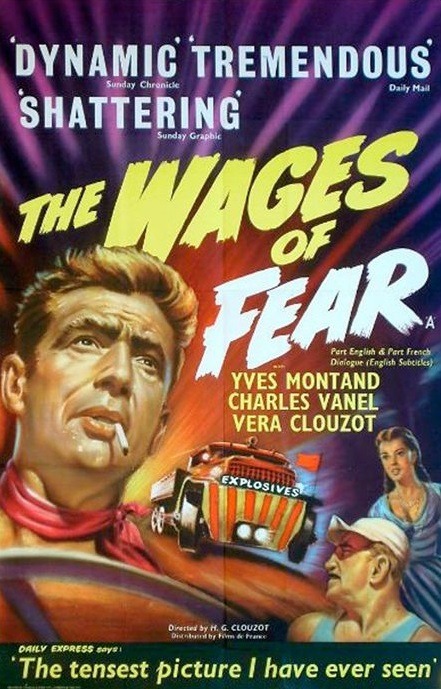
View On WordPress
0 notes
Text

Les Époux Arnolfini de Jan van Eyck.
LIVRE/Les époux Arnolfini de Jan van Eyck disséqués par Jean-Philippe Postel
Crédits: National Gallery, Londres
Previous
Next
Facebook 4 Twitter Linkedin 0
C'est l'un de plus célèbres tableaux du monde. Conservé depuis 1843 à la National Gallery de Londres, ce panneau de moins d'un mètre de haut se voit intitulé, pour des raisons de commodité, «Les époux Arnolfini» (1). Son auteur ne fait aucun doute. Il s'agit de Jan van Eyck, qui l'a pourvu d'une très visible signature. L’œuvre porte une date, 1434. Le caractère alambiqué de l'inscription en caractères gothiques, «Jan van Eyck fut ici en 1434», ne permet cependant pas de savoir si c'est l'année de sa création ou si l'événement rapporté s'est déroulé cette année-là. De toute manière, ce chef-d’œuvre admirablement conservé ne saurait être postérieur de beaucoup. Van Eyck, dont on ignore la date de naissance, est mort en 1441.
La peinture a déjà fait couler beaucoup d'encre. Elle pose des problèmes complexes d'interprétation. Ancien médecin, Jean-Philippe Postel n'est pas historien de l'art. Il utilise ici les travaux des chercheurs professionnels, en y ajoutant une «observation clinique attentive». Il s'agit en effet de tout voir, même ce qui se révèle microscopique. Van Eyck reste le maître absolu du détail, même s'il y en a tout de même moins ici que dans la «Vierge du chancelier Rolin», à l'iconographie plus simple, qui se trouve depuis la Révolution au Louvre. Là, certains personnages d'un paysage urbain presque infini mesurent moins de trois millimètres.
Une histoire connue depuis 1516
Le tableau connu sous le nom des «Arnolfini» n'a pas toujours porté ce titre. On ne sait rien de son exécution. Il apparaît en 1516, ce qui semble déjà remarquablement précoce, chez Don Diego de Guevara, qui l'offre à Marguerite d'Autriche, régente des Pays-Bas. Il passe ensuite à Marie de Hongrie, la sœur de Charles-Quint, qui s'occupe des mêmes provinces. Elle le ramène en Espagne où il pend encore au début du XIXe siècle au Palacio Nuevo, qu'occupe Joseph Bonaparte, le frère aîné de Napoléon, promu roi à la force des baïonnettes. Après, on ne sait pas. Joseph quitte le pays avec nombre de tableaux, dont beaucoup se trouvent aujourd'hui à Aspley House, la maison des ducs de Wellington en plein Londres. Le colonel William Hay aurait retrouvé celui-ci en 1815 dans une maison belge...
L’œuvre a toujours passé pour mystérieuse, à la manière d'un rébus. Marie de Hongrie l'avait fait fermer par des volets cadenassés, signe de secret à cacher. Dès 1516, le personnage masculin est nommé Hernoul-le-Fin. Par assonance, le historiens en ont fait Arnolfini. Il s'agirait d'un membre (mais lequel, au fait, vraiment Giovanni?) d'une des ces nombreuses familles italiennes faisant du commerce à Bruges, dans le port de laquelle entre vers 1430 jusqu'à 100 bateaux par jour. Les Florentins ou les Lucquois passent quantité de commandes à Van der Weyden, Hugo van der Goes ou Memling.
Le petit chien sans reflet
Le tableau montre un couple bourgeois et prospère. L'homme et la femme ne se regardent pas. Lui tient une main en l'air, dans l'attitude du serment. Elle lui tient la main. Il y a devant eux un ravissant petit chien dont le reflet ne se retrouve pas sur le miroir placé au fond du décor de chambre. Postel va donc se lancer, à la suite de Margaret L. Koster (2003) dans une histoire de mort. La femme en vert est décédée. Elle est un instant sortie du Purgatoire. Sa main brûle celle de son veuf. L'auteur s'appuie là sur des textes médiévaux mêlant théologie et histoires de revenants. La dame n'est donc pas enceinte. Il s'agit d'une mode des débits du XVe siècle, que l'on retrouver dans le costume féminin national coréen, le hanbok.
Le couple a pourtant eu un enfant. Mort-né, sans doute. Le prouverait une troisième bougie du splendide lustre de cuire. Allumée, la première incarne l'homme. Elle se trouve du reste dans la partie gauche du tableau, le lieu de vie. Eteinte et à droite, la seconde désignerait l'état du spectre. Mais il y a un moignon de cire sur une troisième bobèche. La femme sans identité (on a parlé de Giovanna Cenami) a-t-elle été remplacée? Oui pour Postel. Il y a au fond du tableau des pantoufles, signes d'une félicité nouvelle. «Elles préexistent à l'apparition et elles persisteront après elles.» Ce sont donc celles de la remplaçante, à moins que l'époux fidèle n'ait laissé la chambre, meublée avec un luxe extrême, en l'état après la mort de son épouse. En couches, sans doute.
Un jeu de construction
Je ne vous donne là que quelques-unes des innombrables suppositions que l'auteur aligne en tenant compte des mentalités de la fin du Moyen Age. Il s'agit d'un jeu de construction. Tout demeure improuvable. Il existe même le risque que l'hypothèse de départ soit fausse. Passionnant, le jeu n'est pas nouveau en soi. Certaines œuvres attirent le commentaire, au danger de la sur-interprétation. Notons que beaucoup d'entre elle sont flamandes et remontent aux années 1500. Je viens de retrouver dans ma bibliothèque «Jérôme Bosch et la fable populaire» de Jacques Darriulat (Lagune, 1995), un auteur qui semble avoir disparu. Il y ramenait «L'escamoteur» à une légende médiévale mettant en scène l'empereur romain Néron. J'ignore quelle est aujourd'hui la version officielle du sujet d'un petit tableau de Bosch en apparence très anodin. On dit et on écrit tant de choses...
(1) Les Anglais, plus aventureux, parlent cependant de "The Arnolfini Weddding".
Texte d'Etienne Dumont.
«L'affaire Arnolfini», de Jean-Philippe Postel préface de Daniel Pennac, aux Editions Actes Sud, 159 pages.
http://www.bilan.ch/etienne-dumont/courants-dart/livreles-epoux-arnolfini-de-van-eyck-disseques-jean-philippe-postel
1 note
·
View note
Text
youtube
The Wages of Fear (1953) Review - Mario (Yves Montand), Mr. Jo (Charles Vanel), Bimba (peter Van Eyck) and Luigi (Folco Luili) all live in a small and isolated town of Las Piedras. All four men are hired to deliver a shipment of nitroglycerine to an oil derrick that's about 400 miles away. The shipment must be carried in the bed of a truck as the town doesn't have specialized equipment to move it safely. The mission is basically a suicide mission, however, the four man are each promised $2,000, which is enough to get them out of their town and off living the life they want. Will they deliver the explosives safely, or will they all perish? You'll need to tune in to find out!
#movie review#movies#film review#film#cinema#foreign film#foreign movies#french#english#Spanish#italian#suspense#thriller#rotten tomaotes#100% fresh#Youtube
1 note
·
View note
Text
0 notes

